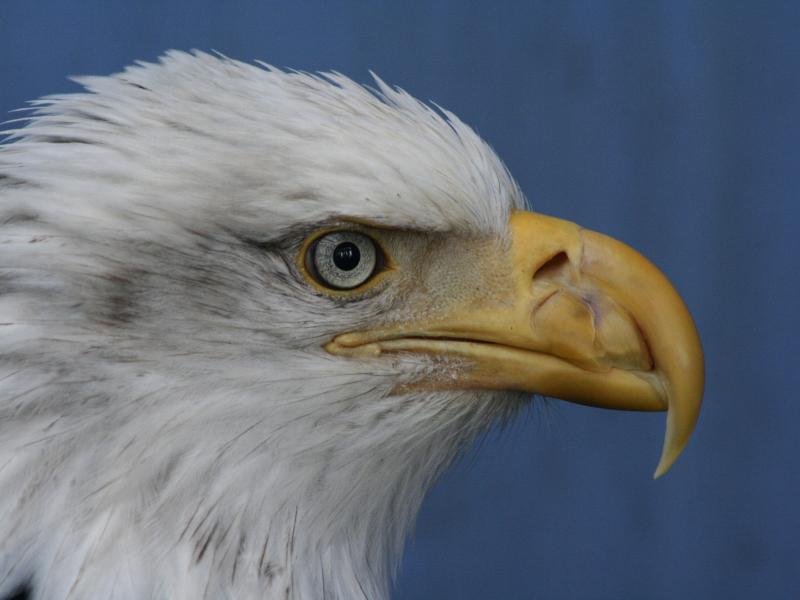SCIENTIFIC NAME:
Haliaeetus leucocephalus
STATUS:
Breeder. Fairly common in winter, spring, and fall in Tennessee Valley region, and uncommon in summer. In other regions, uncommon throughout year. Low Conservation Concern.
DESCRIPTION:
The Bald Eagle (Haliaeetus leucocephalus) is one of North America’s largest raptors with adult females reaching weights of 14 pounds and standing 42 inches tall. Adult males are slightly smaller. The bright white head and tail contrasted against dark body feathers are key characteristics used to identify the bald eagle. However, these white feathers as well as the yellow color of the bill do not develop until the eagles reach sexual maturity at about five years of age. The eyes, legs, and talons are yellow. Immature bald eagles are often mistaken as golden eagles because they lack the white head and tail feathers. Unlike the golden eagle, the legs of bald eagles are free of feathers and their wing feathers are held flat when soaring. The primary feathers of a golden eagle curve upward on the ends while soaring. There are two subspecies of bald eagles: H. l. leucocephalus, found mostly in the southern U.S. and Baja California, and H. l. alascanus, found mostly in the northern U.S. and Canada. The two subspecies intergrade broadly in the central and northern United States. Federal status is categorized by state/region, rather than by subspecies.
DISTRIBUTION:
Bald eagles occur throughout the continental United States and Canada. They are also found northwestward into southern Alaska. In Alabama, bald eagles are found statewide; however, they are concentrated primarily along rivers and large bodies of water. A January survey of bald eagles in Alabama has averaged about 100-150 birds in recent years. Concentrations occur on Pickwick Lake near Waterloo and Guntersville Lake near Guntersville State Park.
HABITAT:
Bald eagles inhabit areas near coasts, bays, rivers, lakes or other bodies of water where food is plentiful.
FEEDING HABITS:
Eagles feed opportunistically on fishes, injured waterfowl and seabirds, various mammals, reptiles, and carrion. The majority of their diet is comprised of fish. They hunt live prey, scavenge, and pirate food from other birds.
LIFE HISTORY AND ECOLOGY:
Bald eagles mate for life and share all nesting and brood-rearing responsibilities. Large nests are most often built in the crowns of tall trees, usually near water. Occasionally, nests will be constructed on the sides of cliffs, however it is uncommon in southern areas. Typically, breeding pairs will return to the same nests year after year, and repair or restore the nest by adding new material. Nests are very large reaching 10 feet across and weighing about 2,000 pounds. One to three eggs are laid in December or January and are incubated for 30 to 32 days. Relatively small at hatching, eaglets need nearly three months of development before leaving the nest. Juveniles are about the same size as adults when they leave the nest, but they don’t reach sexual maturity until they are approximately five years of age. The normal life span of the bald eagle is estimated to be about 30 years.
Author:
Kevin Holsonback, Wildlife Biologist, Division of Wildlife and Freshwater Fisheries








